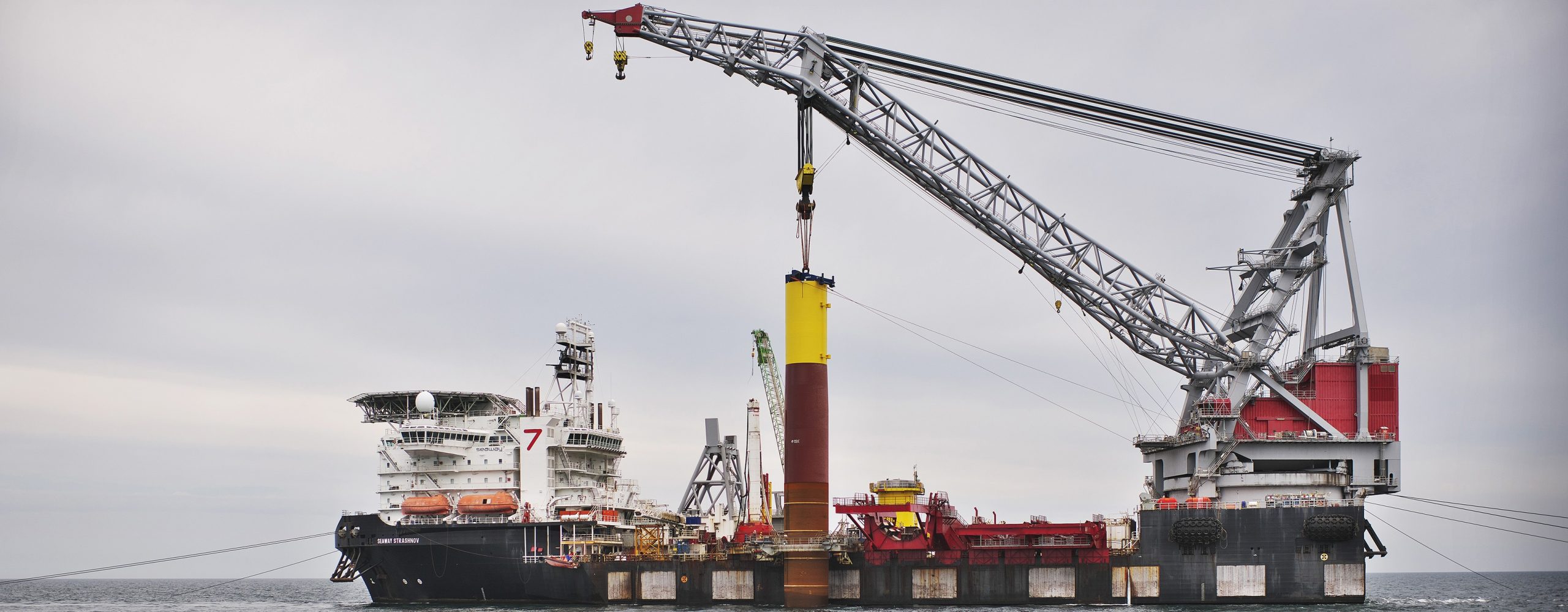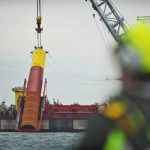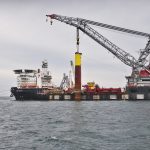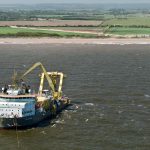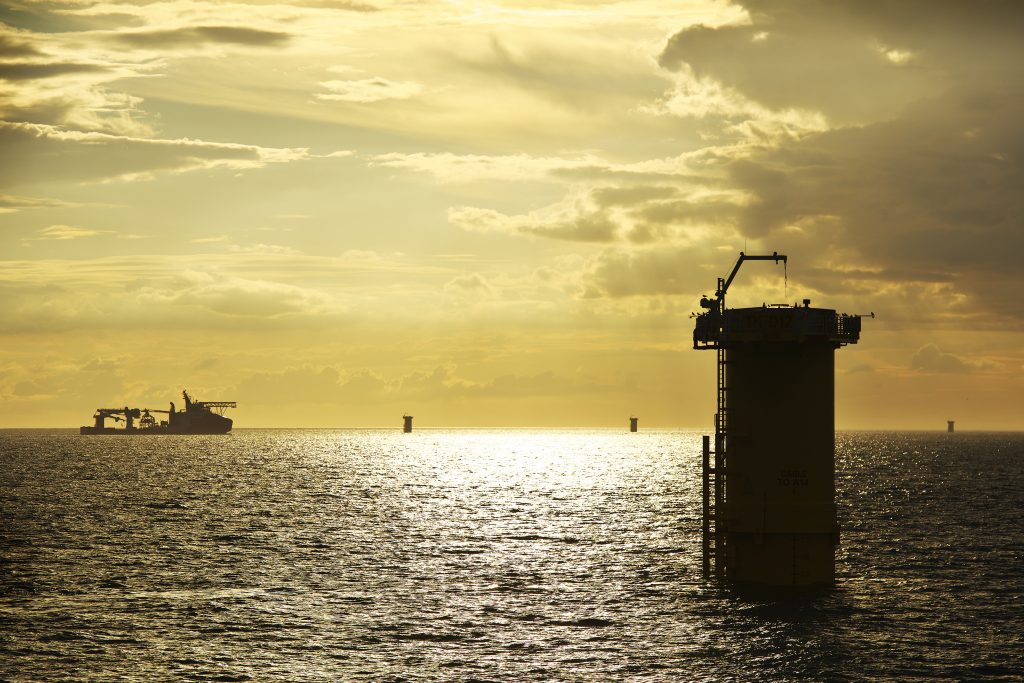
- 90 state-of-the-art foundations now in position
- 2 lengths of 50km export cable connect offshore and onshore electrical systems
- Offshore construction continues on-programme.
Triton Knoll has taken another huge step towards first power generation in early 2021, completing the installation of all 90 turbine foundations and two 50 kilometre long export cables, this week.
The successful delivery was achieved during one of the project’s most challenging times due to the impact of Covid19, and has been completed within the planned summer delivery window.
Throughout construction, the safety and welfare of everyone working on the project has been and remains a top priority for Triton Knoll and its contractors. Covid19 forced the implementation of significant changes in working practices, requiring regular screening and testing of personnel, long periods of isolation for many of those working on the project, and site and vessel lockdowns to ensure the safe and timely delivery of the critical energy infrastructure project could continue.
Project Director for Triton Knoll and RWE Renewables(1), Julian Garnsey, said “We are delighted to have completed this phase of construction within the summer delivery window despite the impacts of Covid19. This is a great credit to all of our supply chain partners and everyone working in the Triton Knoll team.
“We have made excellent progress on the project to date, and look forward to installation of the first offshore turbines in early 2021.”
Each foundation consists of a c.600 tonne steel monopile and c.160 tonne bright yellow transition piece, manufactured using state of the art methods to be significantly lighter than previous technologies (2) . The installation contract was awarded to, and managed by Seaway 7, and the foundations were installed by Heavy Lift Vessels Seaway Strashnov and DEME Innovation.
Both 50km export cables were also completed this week with the jointing of the final length of NKT-manufactured subsea offshore export cable, undertaken by NKT from the vessel Olympic Zeus.
Boskalis, part of the VBNK partnership with NKT, laid and plough buried both lengths of 220kV subsea cables, which link the two offshore substation platforms to the onshore electrical network, using the vessel Ndurance. Each circuit, once energised, will transmit the high voltage electricity generated by the wind farm back to the shore, and ultimately into UK homes and businesses.
With continuing concern over the pace and impact of climate change, the need for nationally significant offshore wind projects like Triton Knoll to help decarbonise the UK’s energy infrastructure is greater than ever. The state-of-the-art offshore wind farm will have a maximum installed capacity of 857megawatts and, once fully operational, will be the most powerful in the RWE fleet and capable of powering the equivalent of over 800,000 UK homes(3).
The project is located over 32 kilometres off the Lincolnshire coast, with a turbine array that covers an area of 145 square kilometres, bigger than the City of Manchester. It is jointly owned by RWE, J-Power and Kansai Electric Power, with RWE managing the wind farm’s construction and long-term operation and maintenance works, on behalf of its project partners.
Media Contact
Mark Fleming, RWE / Triton Knoll, Senior Public Relations Officer.
M: 07825 608096 / E: mark.fleming@rwe.com
Editors Notes
(1) RWE Renewables
RWE Renewables, the newest subsidiary of the RWE Group, is one of the world’s leading renewable energy companies. With around 3,500 employees, the company has onshore and offshore wind farms, photovoltaic plants and battery storage facilities with a combined capacity of approximately 9 gigawatts. RWE Renewables is driving the expansion of renewable energy in more than 15 countries on four continents. For further growth a net investment budget of €5 billion is available until 2022. When adding in possible partnerships, the medium term investment budget could reach up to €9 billion. The focus is on the Americas, the core markets in Europe and the Asia-Pacific region.
(2) Innovative foundations design
means that the steel savings in the manufacturing of the foundations is equivalent to 3.5 x Eiffel Towers, or 2 x Shard buildings, when compared with similar structures currently deployed offshore.
(3) Energy Generation
It is estimated that the average annual generation expected at the site could be equivalent to the approximate domestic needs of an expected minimum of 800,000 average UK households. Energy predicted to be generated by the proposal is derived using wind speeds monitored in the local area and correlated with long term reference data. The energy capture predicted, and hence derived homes equivalent figure may change as further data are gathered. Equivalent homes supplied is based on an annual electricity consumption per home of 4100 kWh. This figure is supported by recent domestic electricity consumption data available from The Digest of UK Energy Statistics and household figures from the UK National Statistics Authority.

